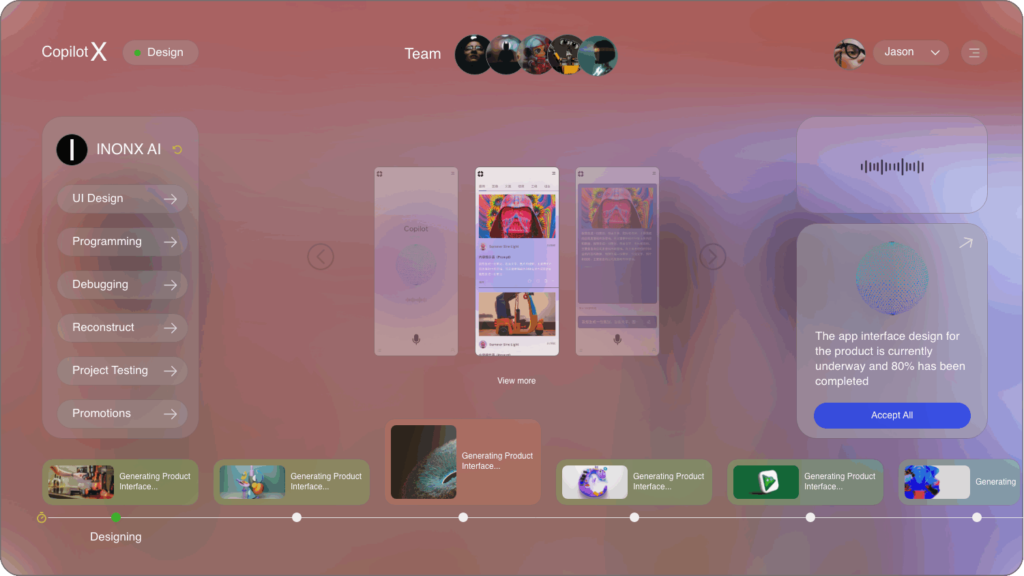Artificial Intelligence (AI) continues to evolve at an unprecedented pace as we move into 2024. With the launch of new large models, enhanced APIs, and specialized technologies, AI’s capabilities are becoming more sophisticated and applicable across a variety of industries. This article delves into the latest advancements, from multimodal systems like Google Gemini 1.5 Pro to innovative tools designed for healthcare, business automation, and cybersecurity.
.
**Google Gemini 1.5 Pro: A Game-Changer in Multimodal AI**
In January 2024, Google unveiled its latest large language model, Gemini 1.5 Pro, which integrates advanced multimodal capabilities. This model can process both text and visual inputs, allowing for a more nuanced understanding of context and an enhanced user experience.
Gemini 1.5 Pro’s extended context understanding is one of its most impressive features. It enables the model to analyze and derive insights from significantly larger datasets, utilizing up to 64k tokens, which is a considerable leap from its predecessor. By incorporating images alongside textual information, users can expect improved accuracy in tasks ranging from content generation to complex problem-solving.
Such multimodal interfaces hold substantial promise for sectors like education, where personalized learning experiences can be crafted based on varied inputs. This technology enables educators to create tailored curricula that adapt to students’ learning styles, ensuring a more effective learning outcome (TechCrunch, 2024).
.
**Transformative Tools and APIs for Industry-Specific Applications**
As the capabilities of AI models expand, so do the tools and APIs that allow industries to leverage these technologies. Companies are increasingly investing in platforms that integrate AI to streamline operations and enhance decision-making processes. One notable example is **Starburst**, a leading analytics platform that recently launched its Real-Time Data Analysis feature powered by machine learning algorithms.
This feature enables businesses to analyze vast amounts of data instantaneously and make informed decisions on the fly. By integrating AI-driven insights, organizations can respond quickly to market changes, improving their competitive edge and operational efficiency. The potential applications are vast, spanning sectors such as retail, finance, and supply chain management (Starburst, 2024).
Moreover, several AI APIs are emerging that specifically target healthcare, allowing for improved patient diagnosis and treatment plans. These tools use advanced data analysis and predictive algorithms to provide healthcare providers with insights that can fundamentally change patient outcomes.
.
**Emerging AI Technologies: Debiased and Reliable LLMs**
One of the pressing challenges faced by AI development has been the biases inherent in large language models (LLMs). A significant breakthrough in 2024 is the emergence of more reliable and debiased LLMs. Firms like OpenAI and Anthropic have announced new versions of their models with advanced debiasing techniques that ensure fairer outcomes across diverse demographics.
These technologies not only improve the ethical deployment of AI but also expand its usability in sensitive areas like hiring and criminal justice. By focusing on fairness and reliability, these models stand to foster an inclusive approach in AI deployment, echoing the growing demand for ethical AI solutions (MIT Technology Review, 2024).
.
**Innovative AI Products for Enhanced Functionality in Enterprises**
As 2024 unfolds, innovative AI products tailored for enterprise solutions are also making waves. Noteworthy among these is Microsoft’s integration of Copilot into its Office suite, which enhances productivity through AI-driven insights and automations. By utilizing sophisticated natural language processing tools, Copilot assists users in drafting documents, preparing presentations, and analyzing data seamlessly.
In addition to productivity tools, AI-based cybersecurity products are gaining traction. For instance, CrowdStrike has implemented AI algorithms that detect anomalies in network behavior in real time, significantly enhancing an organization’s security posture. These applications can identify potential threats before they manifest into actual attacks, positioning businesses to react proactively rather than reactively (CyberScoop, 2024).
The implications of such technological advancements are profound. In sectors like healthcare, AI can assist in real-time patient monitoring through predictive analytics, potentially saving lives. In education, platforms leveraging these technologies can offer personalized learning experiences. Meanwhile, in businesses, automation tools enhance operational efficiencies, driving down costs while improving output quality.
.
**AI for Health Equity Initiatives**
AI’s role is also expanding in the realm of health equity initiatives. Innovative projects leveraging AI aim to address disparities in healthcare access and quality. For example, initiatives focused on analyzing social determinants of health use AI to provide insights into community-specific health needs.
Organizations such as the World Health Organization are employing AI-driven analytics to identify and mitigate health inequities globally. Utilizing machine learning, these initiatives can predict outbreaks, allocate resources effectively, and improve overall public health responses. The overarching goal is to create a healthcare environment where equitable access is not an aspiration but a reality (WHO, 2024).
.
**Future Perspectives: The Impact of AI Across Industries**
The advancements discussed highlight a pivotal juncture in AI development as we witness a convergence of technology that drives not only efficiency but also ethical considerations and inclusivity. As businesses adopt innovations like those from Google and Microsoft, the industry landscape is poised for transformative changes.
The clear trend towards integrating AI into societal and economic frameworks suggests we are on the brink of a new era where AI will play a critical role in shaping the future. With a focus on reliability, usability, and ethical deployment, organizations are better equipped to navigate challenges and leverage opportunities presented by AI.
.
In conclusion, the advancements in AI as of 2024—exemplified by models like Google Gemini 1.5 Pro, tools like Starburst for real-time data analysis, and pioneering health equity initiatives—are remarkable. The implications of these advances extend far beyond technology; they encompass societal impact, setting the stage for an AI-driven future characterized by improved healthcare, business efficiency, and educational equity.
As AI continues to evolve, keeping an eye on these trends will be crucial for stakeholders across all sectors to harness its potential for transformative change.
**Sources**:
1. TechCrunch, 2024 – Google Gemini 1.5 Pro Announcement
2. Starburst, 2024 – Launch of Real-Time Data Analysis
3. MIT Technology Review, 2024 – Debiased LLM Technology Overview
4. CyberScoop, 2024 – New Innovations in Cybersecurity AI
5. WHO, 2024 – AI for Health Equity Initiatives Report

























